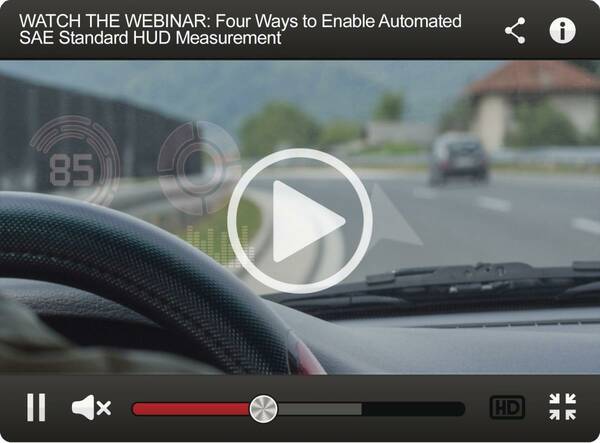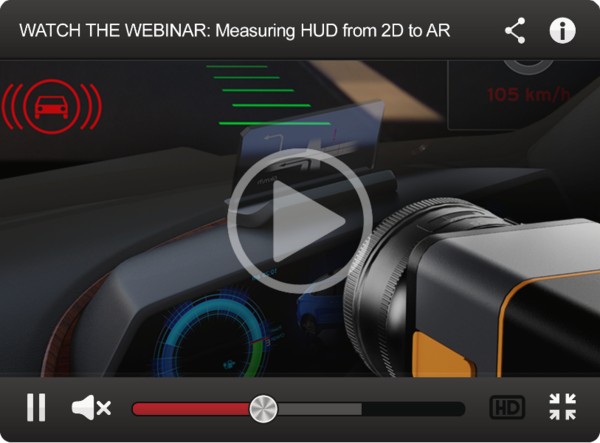Software Designed for Head-Up Display Measurement
Head-up displays (HUDs) were a hot topic in the automotive industry in 2018, and that trend is only going to continue in the new year as more and more automakers incorporate HUDs to enhance safety and functionality of new car models. HUD technology has also been a continuing focus of technical development here at Radiant, most recently with the release of a robust new software module offering a complete HUD test suite, TT-HUD™.
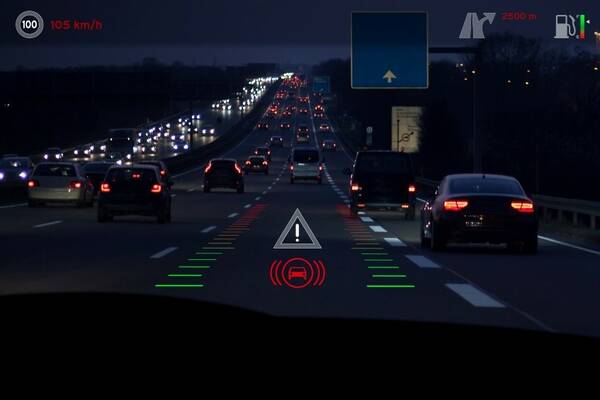
HUD Quality Challenges
Head-up displays (HUDs) pose unique measurement challenges for manufacturers, who must account for image luminance, contrast, and clarity of a display projection, regardless of ambient conditions, virtual image positions, or focal distances on an infinite viewing plane. Comprehensive HUD testing requires measurement that combines photometric (light) and dimensional (spatial) data to ensure the accuracy of information conveyed to a vehicle operator within a rapidly changing, real-world environment.
This viewing context poses a challenge for ensuring image visibility and position, especially when it comes to meeting all requirements of established quality standards. Photometric measurement of light and color is equally important as dimensional measurements for image size, distance, location, and integrity in performing comprehensive HUD evaluation to meet Society of Automotive Engineers (SAE) industry-wide standards for optical quality. The standards automakers must comply with are:
- SAE J1757-1 “Standard Metrology for Vehicular Displays”
- SAE J1757-2 “Optical System HUD for Automotive”
Although no one measurement system is specified for these requirements, Radiant's photometric imaging systems and software offer several differentiating benefits that greatly reduce HUD evaluation time, enabling fully-automated measurement to comply with SAE standards, and limiting cost and time to market.
TT-HUD™ Display Test Software
In December 2018, Radiant released a new software module (a package of application-specific software tests and parameters from our TrueTest™ Software) that can evaluate all visual aspects of HUD systems, and test to the specific parameters documented in automotive standards. TT-HUD provides all of the benefits of TrueTest Software to efficiently perform light, color, and dimensional measurements with specific tests used to evaluate the quality of augmented projections, such as those emitted by HUD systems. A comprehensive HUD test solution from Radiant combines the TT-HUD application-specific software module, and a ProMetric® Imaging Colorimeter or Photometer with 200 mm electronically controlled lens to perform rapid, automated visual inspection of head-up displays.
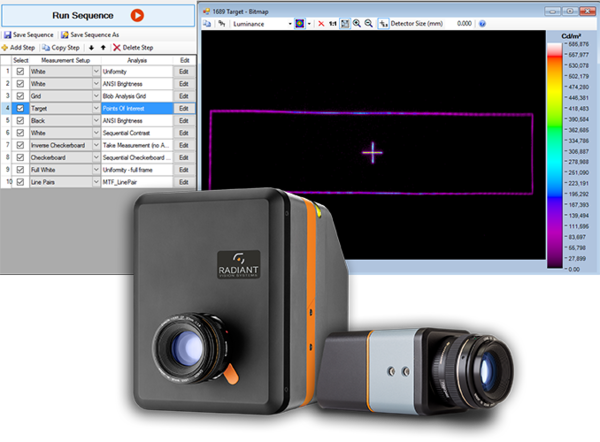
A complete HUD test system, including a ProMetric imaging colorimeter or photometer with electronically controlled lens, plus the TrueTest Software TT-HUD module.
With TT-HUD, you can test all virtual image characteristics simultaneously, capturing and processing data much faster and more consistently than a spot measurement device or machine vision system alone or combined. In a single hardware/software system, the Radiant HUD measurement solution can be used to evaluate all visual aspects of the HUD system as well as test to the specific parameters documented in automotive standards.
Comprehensive HUD Test Suite
Tests for HUD quality include photometric measurements used to evaluate properties of light (brightness, contrast) as well as spatial measurements used to evaluate projection quality (distortion, warping) against defined tolerances. TT-HUD allows users to define a complete set of measurement parameters and pass/fail criteria for all points of interest within HUD test images. The software module includes standard display tests, as well as specific tests and test images for optical HUD evaluation including:
|
|
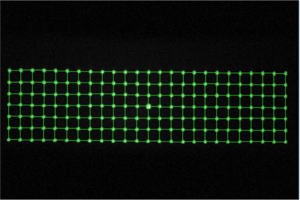 | 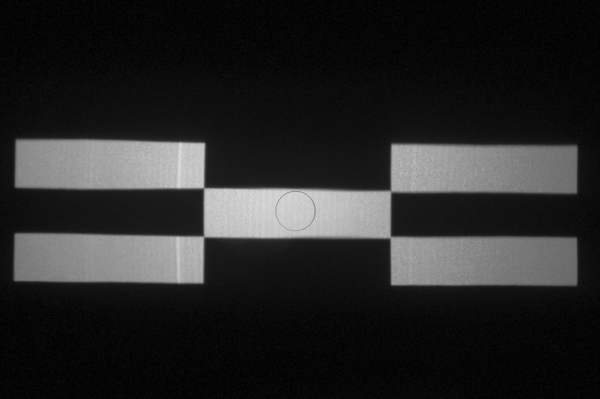 | 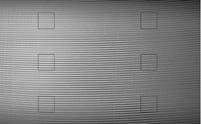 |
TT-HUD applies tests specific to HUD measurement, including Distortion Grid and Checkerboard Contrast. Modulation Transfer Function (MTF) line pair algorithms calculate contrast at different spatial frequencies to determine image clarity.
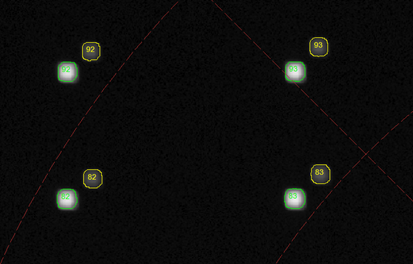
TT-HUD detects duplicate projections (overlapping or separated from the primary image) that are caused by ghosting effects using a Ghosting Analysis function.
Based on the TrueTest Software test sequencing platform, tests from the TT-HUD test library can be added to a sequence to run in automated succession from test to test. These sequences are stored, so multiple sequences can be created and recalled as needed. In addition, test parameters and pass/fail settings may be set for each test to create qualification criteria unique to each manufacturer’s requirements. Individual test results are displayed in the software interface and can be recorded in a report.
Image Distance and Location
Using TT-HUD in Focus Mode, users can easily calculate the real distance of images in the projection at various focal distances (f) on the infinite plane.
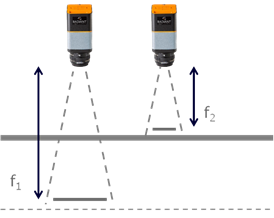
Leveraging the electronically-controlled lenses of Radiant ProMetric imaging systems, TT-HUD software converts camera focal distance to real-distance units to measure the exact image location as projected out to several meters. This is especially critical for determining image sharpness and clarity at various focal depths, such as for AR-HUD systems where images may be projected at a range of distances.
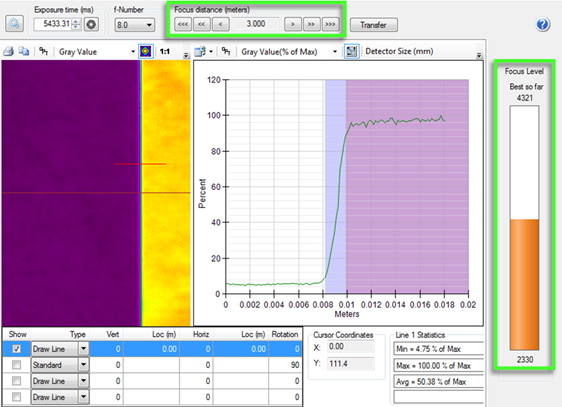
Using Focus Mode in the TT-HUD software interface, camera lens focus can be electronically controlled. When best focus is achieved, focus distance shows the real distance (in meters) of the projected image.
Fully Automated Testing
Because TT-HUD provides the same functional capability of Radiant’s TrueTest Software platform, a Radiant HUD measurement system includes TrueTest software API to customize interfacing and communication with the HUD system. API can be used to control test images projected by the HUD system, trigger the connected imaging system (ProMetric Imaging Photometer or Colorimeter) to capture a measurement image, and synchronize the defined TT-HUD test in sequence for fully-automated testing. This complete system integration offers unrivaled efficiency for testing optical quality parameters of the HUD projection system in a matter of minutes.
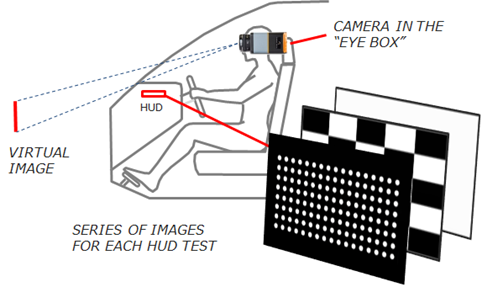
Illustration of a HUD measurement system, where software API is used to control and test multiple test patterns in sequence.
Leader in HUD Test & Measurement Solutions
To learn about Radiant’s other innovations in HUD testing, check out these informational resources.
Compliance with New SAE Standards
In late 2017, Radiant presented a webinar on the topic: “Four Ways to Enable Automated SAE Standard HUD Measurement.” In it, we discussed the new SAE standard J1757-2, and an approach to automated testing to help OEMs comply with the measurement methodology.
Quality of Next-Generation 3D and AR HUD Displays
In November 2018, we discussed considerations for next-generation 3D and augmented reality HUD (AR-HUD) systems in our Webinar “Measuring Head-Up Displays from 2D to AR: System Benefits and Demonstration.”
As automotive HUD displays proliferate, Radiant will continue to be there supporting the quality, safety, and functionality of vehicle systems that drive manufacturer success.
Join Mailing List
Stay up to date on our latest products, blog content, and events.
Join our Mailing List
